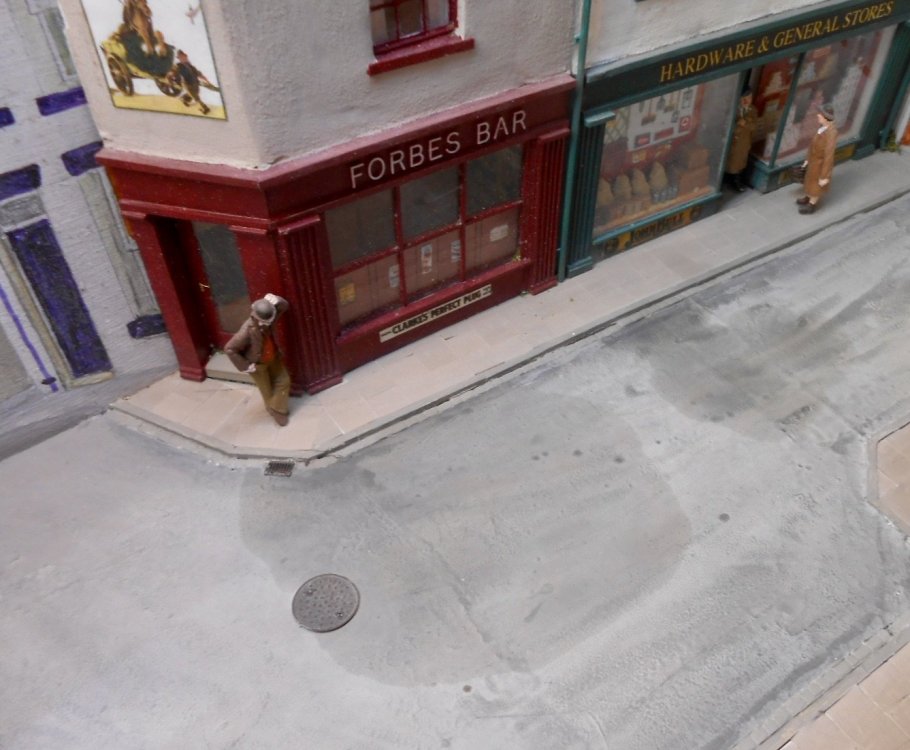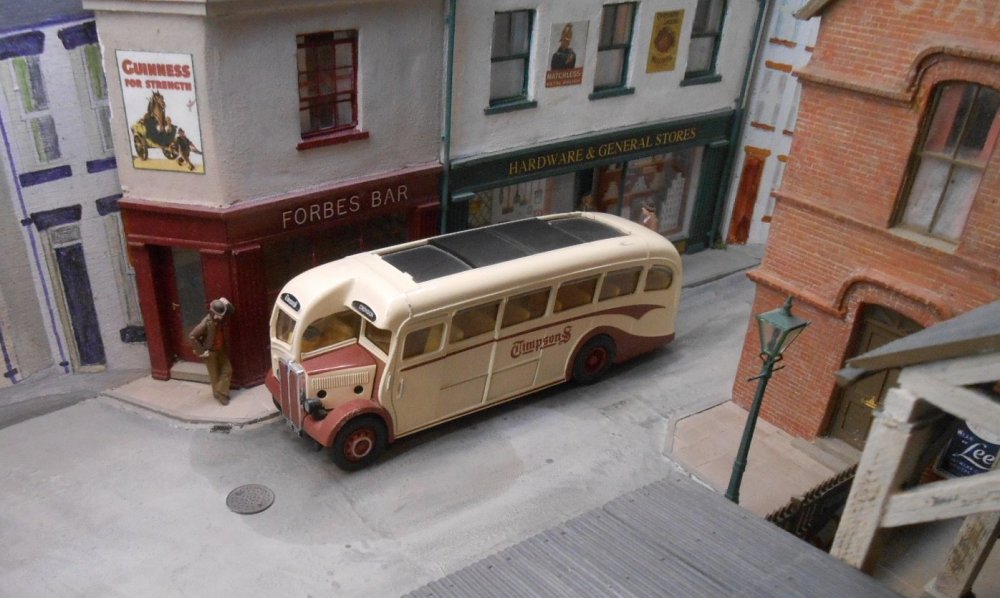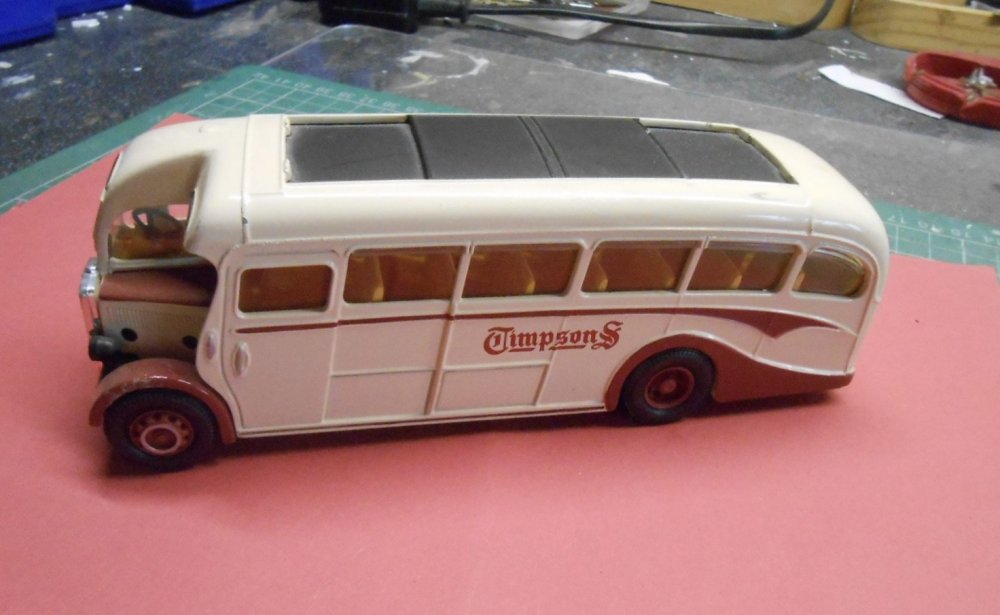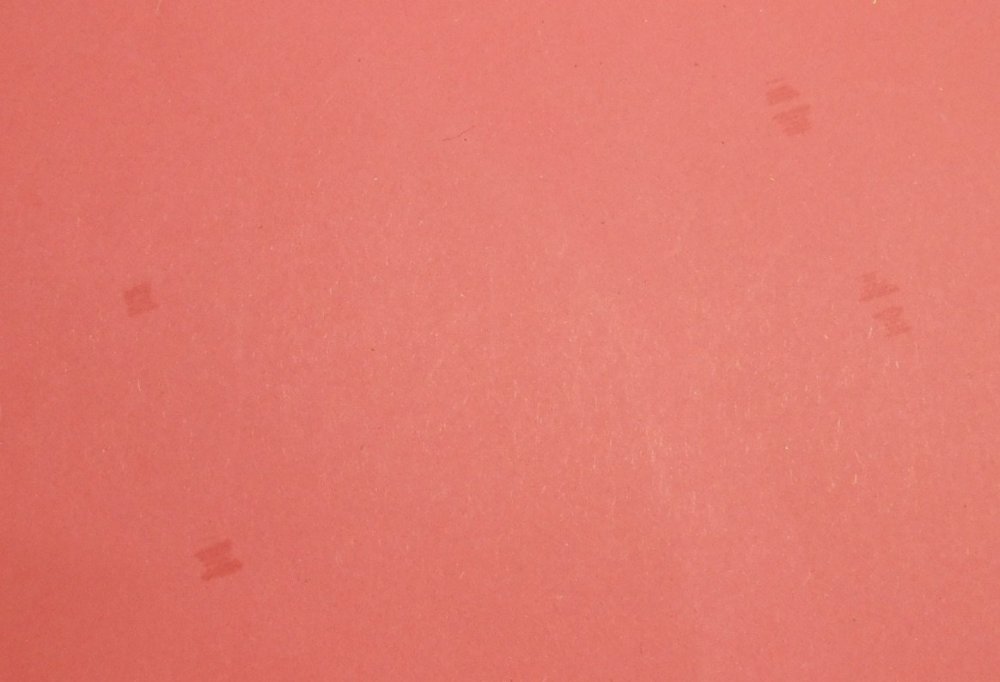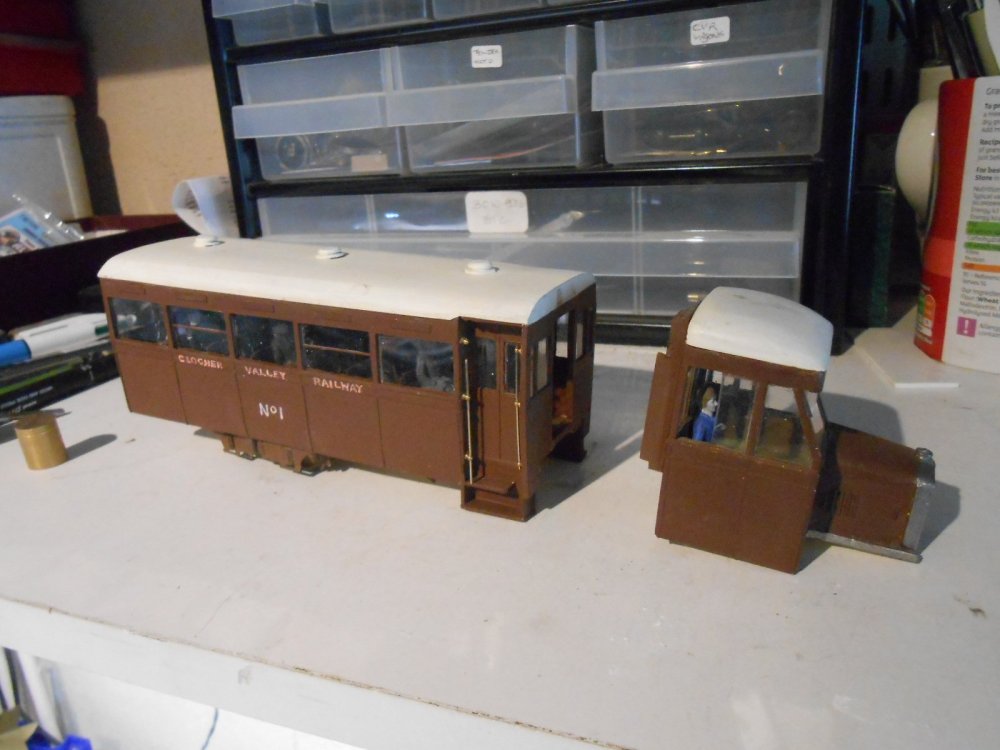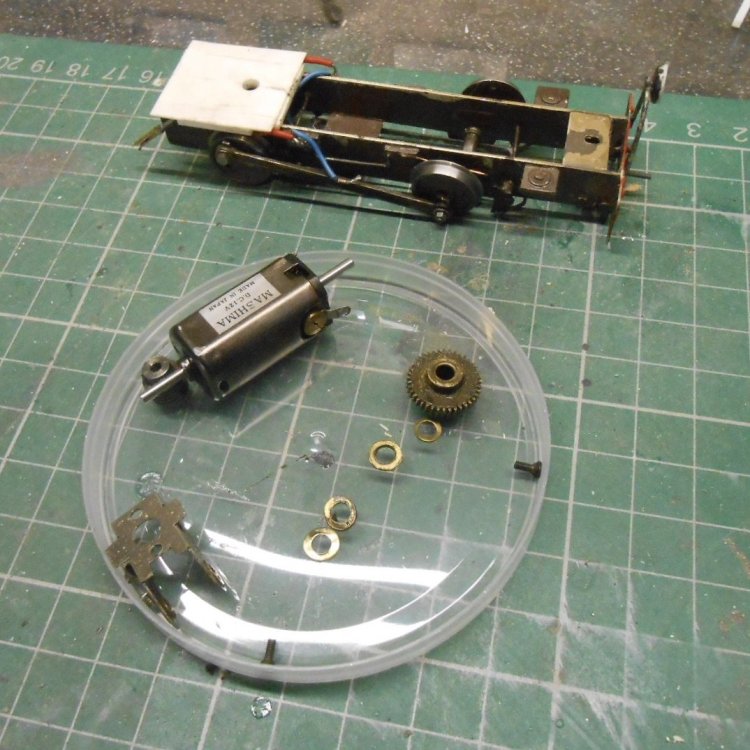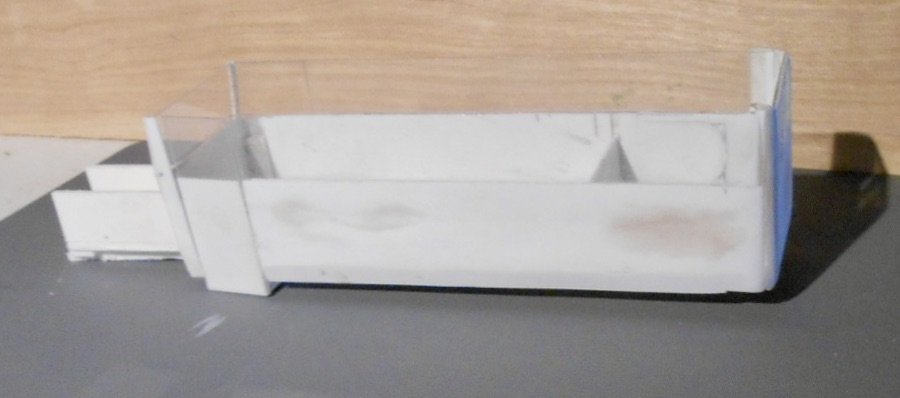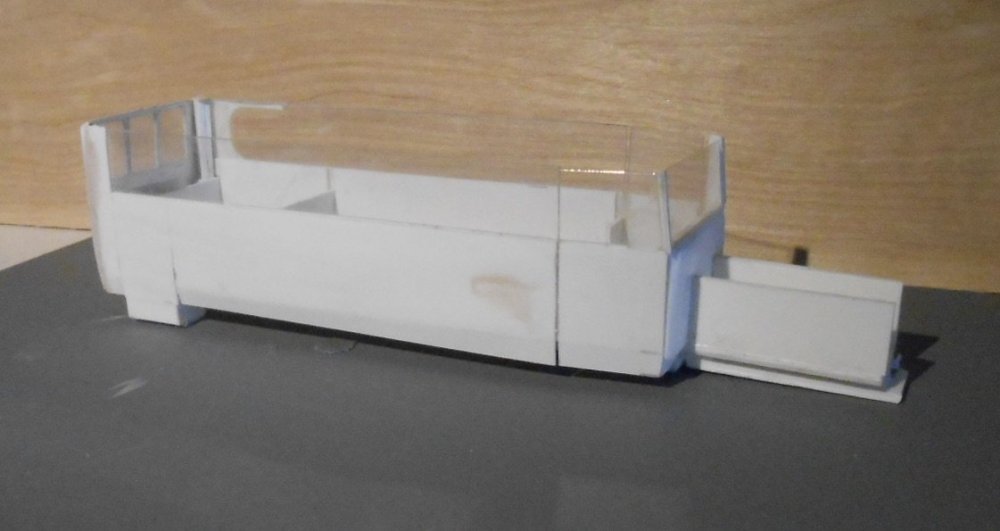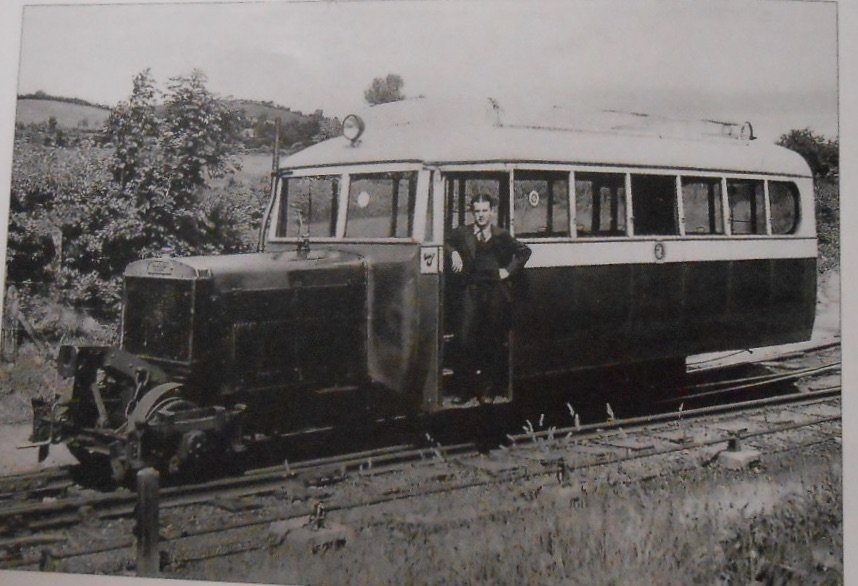
David Holman
Members-
Posts
4,358 -
Joined
-
Last visited
-
Days Won
117
Content Type
Profiles
Forums
Events
Gallery
Blogs
Store
Community Map
Everything posted by David Holman
-
Drogheda MacBride Station And Platin Cement Factory
David Holman replied to Anders112's topic in Irish Model Layouts
If you have the space, then this prototype really looks a good'un.- 30 replies
-
- 1
-

-
Be good to see you. I offered them Northport Quay as an alternative, but not narrow enough!
-
Having said that the Letchworth show would be Fintonagh's last in its current form, got an invite to go back to the Eastleigh narrow gauge show at the end of April, so have been getting stuff out to make sure all is still working, after an eight month layoff. The Barclay tank and Swilly/Donegal stock have been trundled around, but not the Clogher Valley. And just as well, because a couple of strange things seem to have happened. First was the sight of two curious patches on the road behind the station. At first it looked like damp, but happily that was quickly ruled out and soon realised the culprit was my Cogi Classic bus. When I first bought it as a model for one of the Swilly's fleet, I filed 'flats' on all four tyres: this is a simple trick that makes any tired model sit better. The bus has spent several weeks sitting behind Fintonagh station and it turns out those filed tyres have been [somehow] leaking a greasy substance into the road surface. Have proved this by placing the bus on a piece of thin card for a couple of days and, hey presto, small grease marks have started to appear, as shown below. Never come across this before though! Haven't decided what to do about the road surface yet, but am thinking it might be an idea to seal the flat spots on the tyres before it goes back on the layout. Won't be there at Eastleigh mind, because the bus was built after my Clogher Valley late 1930s timeline. Stock mostly proved alright, apart from two Kadee couplings needing attention, until I got to Railcar No1 that is. Running was decidedly lumpy, indeed it was struggling just to haul itself along and was really noisy in reverse. Tried it on the bench with my old H&M Clipper, with the same result, so decided to remove the body work and have a look at the chassis. Loosening the main gear wheel showed the rods were still moving freely, but in doing this noticed the motor [a Mashima 1626] was decidedly hot. Not good. So, decided to to strip down the whole chassis, including un soldering the motor leads and removing the motor from the gearbox. On its own, the motor is vibrating far too much for my liking and quickly gets warm even under a light load. Unfortunately, Mashimas haven't been available for some time and alternatives seem very thin on the ground with nothing available from either Roxy or Wizard. Branchlines might be an option, especially as it is one of their gearboxes, but I don't have an up to date catalogue and they must be one of the few traders still without an an on line site. The only option seemed to be High Level, so a new motor gearbox, of similar size has been ordered from them. The Railcar, meanwhile, remains in bits as shown below.
- 266 replies
-
- 10
-

-

-
Drogheda MacBride Station And Platin Cement Factory
David Holman replied to Anders112's topic in Irish Model Layouts
Looks a very good plan. Best advice is the old one of "every journey begins with the first step". An ambitious project, for sure, but take your time and enjoy it - keeping us all posted as you go along.- 30 replies
-
- 4
-

-

-

-
Splendid!
-
Alphagraphix do the County Down 2-4-0 in 7mm scale and the MGWR G2 as well. The photo on the website of the latter is the one I built. Did a GER E4 2-4-0 as well, back in the day. Nowhere near as challenging as a 4-4-0, because they are not much different to an 0-6-0. Bit of side play and springing on the front wheels and Robert is your father's brother! Well, mostly...
-
Quite a prospect. Sweeping curves, varying levels - so much to like!
-
Beagnach end: A Branchline terminus.
David Holman replied to Metrovik's topic in Irish Model Layouts
Do like an overall roof. -
I may have posted something similar before, but the choices made by manufacturers in the past have sometimes been odd, like the Hornby Dublo/Wrenn R1 0-6-0Ts, which only really got used on the Folkestone Harbour branch. This was very much back in the day, whereas we now have sensible options like Stanier Black 5, Terriers, etc, etc. I suspect that in the past, choices were driven by what could be easily produced, whereas now, options are more varied. However, from an Irish, steam outline point of view, a key choice will be whether a new rtr loco can be converted to 21mm gauge or not. New diesels seem to be made that way, but for any steam loco with splashers, outside cylinders or valve gear, suspect it becomes a production nightmare. Add in the fact that there are very few steam locos that avoid ticking these boxes and suspect whatever is produced will perforce be limited to 16.5mm gauge, though guess that is unlikely to worry the majority of potential buyers.The By the by, does anyone know if the 7mm scale Ruston 88DS is easily converted to 36.75mm gauge? Likewise the little Hunslet 0-6-0T which bears more that a passing resemblance to one used on the Fenit branch and elsewhere the the South West?
-
A further thought is that where I suggested a ground signal on the crossover leading from platform 3 to the up main line, this isn't needed. On the real railway, this move would be protected by interlocking the signals and points - the signal could only be pulled off/clear, once the points were set for this move. Signal enthusiasts in the model world will take great delight in replicating such things (and why not, if that is your thing), though as in the real world, such things are complicated.
-
Oops! You are correct. Have indeed swapped 1 & 3. Well spotted.
-
He should be paying someone to take it away!
-
Good old imperial measuring! How many cubits is that?
-
Thanks Alan. Somewhere in RMWeb there is a thread of one being built like this. Look up the images for Donegal railcars on Google and eventually you come to a picture and just visit to get to the thread. That's how I found the 1:14 plans from New Zealand as well. Only problem with such searches it (if working in more obscure fields), you think you found something useful, only to discover it is one of your own posts, often from this very forum!
-
Above is just one take on how you station might be signalled, but no doubt there are other options: Signal 1 is a three doll unit. The left arm signals a train from the main line to the quay. The middle arm controls entry to platform 1, while the right hand one is for platform 2 or 3. The left doll would probably be shorter than the other two. Signal 2 is a starter, with a single arm and will sit at the entry to the quay siding, for a train leaving this Signal 3 is also a starter and will sit at the end of platform 1 Signals 4 and 5 are also starters for platforms 2 and 3, should they been used for both directions, otherwise signal 4 is not needed. Similarly, signal 6 has two dolls on its post, although if only up trains use platform 1, then just a single signal is needed. However, there will then need to be a starter signal at the other end of platform 2, for down trains to start. There will need to be a starter at this end of platform 1 as well, if both lines lines are bi-directional Three possible sets of ground signals might be included, as marked GS on my sketch. These would cover entry to/from the sidings, though only the middle one is essential, as it is on the main running lines and would guide a train from platform three on to the up main line. The other two ground signals, to the quay and other sidings probably aren't needed as these points would like as not be controlled by hand levers adjacent to the track. Hope this helps - other options are possible, while you then need to decide what sort of signals you want and there is plenty of choice for that!
-
Managed to fit in a bit of work on the railcar this week & and giving it to Mark before I go any further, so he can look at creating a chassis. Nothing to fancy in the construction. The sides are being built around 1mm clear acrylic sheet, overlaid both inside and out with 20thou plasticard. A fair bit of car body filler will be needed to create some of the curves and to deal with where my over enthusiastic use of MEK solvent has caused blemishes. One additional thing I'm doing for Mark is building a short piece of 21mm gauge test track. This is just a piece of plywood with two three foot radius reverse curves. If the railcar can negotiate these, it should be fine on my layout. Needless to say, this item is not finished yet!
-
Clogherhead - A GNR(I) Seaside Terminus
David Holman replied to Patrick Davey's topic in Irish Model Layouts
Have you realised you are still not a year into this project yet? Amazing progress. -
So, double track main line coming in from the left. Single track line entering from the right. Will platforms one and two be just up and down separate, or will you want them both signalled for each direction? Potential for a multiple doll gantry across the three tracks where you have written "long sidings", with arms controlling entry to the quay and platforms 1-3 in one direction, plus starters from the quay and all the platforms in the other. That's before adding shunt signals to the long sidings. Could be positively bristling, but a serious job to build, let alone make work. Something simpler with several, separate posts probably better. Another question - will they be hand operated, remotely controlled or just decorative? Either way looks an interesting project.
-
Thanks folks and love the LTSR dodge, Andy! Saw that pencilled in date on the underside - also that the model appears to be three rail, which I hadn't considered, but makes sense I suppose.
-
Thanks folks - useful to see how the pony truck connects to the front end, plus the lumps of lead there too. Square section fuel tank on the left, I see. There are anomalies in both the 0n16.5 drawings and the large scale set. The former has a much steeper ridge to the bonnet too (clearly not the case in photos), while the latter has the windscreen with a V profile. Fry's model looks like 'original' condition, with the big front overhang of the roof and no front coupler, or the sheeted/plated between body and bonnet front. What a stunning model though, especially for its day.
-
Followers of my Workshop thread will have seen I'm starting to build one of these railcars in 7mm scale. I've got some drawings and several photos, both in books and last year's Donegal Society calendar - as per the fine model above. One or two questions have arisen since I started making the basic shell of the model and any help with these will be most welcome: The area around the engine/bonnet always seems very dark in photos, so any info on both the front end and the lower edge of the bonnet will be useful Likewise the front pony truck and front coupling What colour were the seats? The fuel tank, which I think should be on the right hand side: is it round or square? The top picture shows an interesting cowl/cover linking the front of the body with the bonnet. Guess I'm probably going to represent this with filler, filed to shape, but what was it on the prototype? Tarpaulin, beaten metal, or something else? Precision Paints do the correct Donegal colours, but does anyone know of a good match car rattle can by any chance? What colours should I paint the driver? Are there any commercial transfers available for the Donegal in 7mm scale? Many thanks.
-
Can't delete! The other thread is the one I want
-
- 1
-

-
Suggest you provide a sketch plan of the layout. Need to know which are the running lines and which are just sidings. Is the station a terminus, or part of a continuous run? From this it should be possible to work out what signals are needed and where.
-
6mm birch ply by the look of it? Nice. Very nice!
-
We wish!
.png.c363cdf5c3fb7955cd92a55eb6dbbae0.png)
